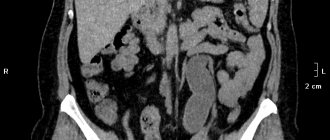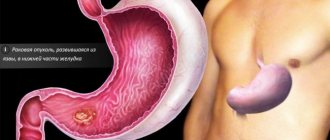Introduction
The need for milk is the first and most important of all the needs of a baby. Ideally, this should be mother's milk. It is not for nothing that the entire modern medical community actively promotes breastfeeding and on-demand feeding. In the absence of milk and the impossibility of natural feeding, the task of parents is to choose a high-quality adapted formula for their baby.
And now, it would seem, the feeding process is established, the child takes milk or formula well. But after feeding, such an unpleasant phenomenon as regurgitation occurs. Young parents are often frightened by this situation. And not in vain, because it is not always possible to unambiguously determine whether this is the norm or a deviation. And before taking any action, you first need to understand the reasons for regurgitation.
Why does a baby spit up after feeding?
In most cases, regurgitation is a normal physiological phenomenon for newborns and children in the first year of life. Regardless of the type of feeding, a small amount of air may enter the stomach. After eating, this air comes out. In infants, the muscle (esophageal sphincter) that closes the stomach and prevents food from entering the esophagus is still poorly developed. Because of this, part of the milk consumed comes out along with the air. Normally, by the age of 12 months, the sphincter matures, and thanks to it, the contents of the stomach remain in place, and only air is belched. This is how the standard situation proceeds. But there are other reasons for regurgitation.
Baby spits up breast milk
Overfeeding
Now all pediatricians recommend feeding on demand. And when the baby is clearly uneasy, the mother immediately offers him the breast. Although it is possible that the child is not hungry at all and is crying for other reasons: he is hot or cold, has a wet diaper, is teething or has colic. Breastfeeding isn't just about food for babies. This is a means of calming down in any uncomfortable situation. Therefore, even if the baby is not hungry, he will never refuse his mother’s breast. As a result, the baby consumes an excessive amount of milk. In this situation, the baby’s stomach can get rid of the excess amount in the form of regurgitation.
Swallowing air
If the baby is not properly attached to the breast or has an inappropriate feeding position, the baby swallows a large amount of air along with the milk. This air accumulates in the stomach and subsequently comes out along with food.
Incorrect actions after feeding
Regurgitation after breastfeeding can be caused by tight swaddling after meals, active games, massage, or tight elastic on the romper. Excessive pressure on the tummy pushes some of the milk out of the stomach.
Baby spits up formula
The mixture is not suitable
The selection of artificial nutrition is always individual. There is no guarantee that popular and proven brands will suit any child. If the formula is poorly digested, it can cause frequent regurgitation after feeding, colic, constipation and allergies.
Incorrect preparation of the mixture
Each manufacturer clearly indicates on the nutrition packaging in what quantity the mixture should be diluted, and what volume a baby of a particular weight category needs. If the mother neglects these recommendations, then the mixture can provoke not only regurgitation in the newborn after feeding, but even more serious digestive problems. Read about proper breeding of baby formula here.
Non-compliance with feeding regime
Unlike breastfeeding, artificial feeding must be done on an hourly basis. The formula takes longer to digest than breast milk and there is usually an interval of at least 3 hours between meals. If feedings occur more often, the baby may regurgitate a new portion of the formula, since the previous one has not yet been absorbed.
Abrupt change in nutrition
A sudden transition from breastfeeding to artificial feeding or a sudden change in formula. Any new food requires a period of adaptation to it for the child’s body. Otherwise, the baby may react to such changes not only by regurgitation, but also by other deviations in the digestive process.
Wrong bottle
The opening in the feeding bottle is too wide. Because of this, during the sucking process, the baby can swallow a large amount of air along with the mixture. Its departure will provoke regurgitation.
Normally, regurgitation does not occur in large volumes. This amount is equal to 1-2 tablespoons of milk with a slightly curdled consistency. Against the background of normal regurgitation, there is no deterioration in health, the child is active, cheerful, eats well and gains weight.
All of the above situations are not pathologies. They only require correction of parental behavior or nutrition. But sometimes regurgitation is a symptom of specific diseases.
Pathological vomiting in infants
Mothers must be attentive to detect in time that something is wrong with their babies. Due to the fact that vomiting in a baby after feeding is a fairly common occurrence, sometimes parents do not attach importance to many other alarming facts, namely:
- the baby is not gaining weight well or the weight has stopped altogether;
- vomiting continues for too long, sometimes up to three hours;
- the child’s nausea is constant, without obvious reasons;
- When vomiting, the newborn begins to choke and cough.
Attention! If vomiting occurs with pale skin and a rise in temperature, the child is lethargic and refuses to eat - these are very dangerous symptoms. You should call an ambulance immediately!
Let's consider the main types of pathological vomiting in infants:
- Nausea is accompanied by extremely high fever. Existing symptoms indicate the development of a viral infection, cold, or poisoning. The baby suddenly vomits, loses his appetite, and becomes weak. Having assessed the baby’s condition, the doctor directs therapy to treat the underlying disease, bring down the temperature, replenish fluid in the small body and light nutrition.
- Sometimes vomiting and fever can have different origins. If before this the baby was, for example, prescribed an antibiotic, then vomiting is an allergic reaction to this drug. The attending physician must be notified of this in order to prescribe another drug, and the drug should be stopped before visiting the doctor.
- Vomiting may be combined with diarrhea. The occurrence of these symptoms indicates poisoning, intestinal or viral infection, or early introduction of complementary foods. If they are intense, you need to call an ambulance. A baby loses fluid much faster than an adult, so you should protect him from developing dehydration. Treatment is aimed at rehydration. Antibiotics are prescribed in serious cases; in less severe cases, antimicrobials are prescribed.
- The baby may vomit like a fountain. The reason for this is aerophagia. This is the phenomenon of swallowing air and it relates to neuroses. Regurgitation is considered a normal process, but sometimes it is a sign of certain ailments associated with abnormalities in the structure of the digestive system. Parents should be alerted to fountain vomiting with much more vomit than the child has eaten. If the baby is capricious, this should serve as a signal to call a doctor.
When does regurgitation indicate abnormalities?
Digestive problems
In this situation, in addition to regurgitation, the baby will be bothered by other symptoms: colic, bloating, problems with stool. After eating, the child will become restless and cry. This may be due to lactase deficiency or deficiency of other digestive enzymes.
Infectious diseases
The baby will experience not just regurgitation, but vomiting. It is not always possible to immediately distinguish between these two processes. Vomiting occurs on a larger scale than simple regurgitation. And it will not always be associated with feeding. When vomiting, milk is pushed out of the stomach under pressure. When burped, it simply flows gently out of the baby's mouth. In the event of an infectious process, the general condition of the child will also worsen. Vomiting may be accompanied by loose stools, increased temperature, moodiness and lethargy, and the presence of mucus in the regurgitated masses.
Neurological disorders
Regurgitation occurs in a fountain, is observed after each feeding, it intensifies after 6 months of age or continues after 1 year. Regurgitation may be accompanied by tremors of the limbs, drowsiness, and throwing the head back during sleep.
Pathologies of the digestive tract. Against the background of regurgitation, the baby does not gain weight, is capricious, has no appetite, and stool retention occurs for several days. There may also be regurgitation of the entire portion of milk eaten.
If such conditions exist, the child requires immediate assistance from a pediatrician. Only a doctor can tell how serious the deviation is and whether it exists at all. If 2-3 of the listed symptoms appear, self-medication is strictly prohibited. You should immediately call a doctor, he will prescribe the necessary examinations and treatment if necessary.
Don't panic
Regurgitation is observed in children from birth or begins at the age of 1-4 months. Food may rise from the stomach immediately after feeding or after 1-2 hours. In some children this happens occasionally, in others several times after one meal. It happens that a baby spits up 10-20 minutes after he starts sucking. Sometimes, when milk gets into his nose, the baby breathes with difficulty, but does not let go of the breast. Mothers are especially frightened at the sight of liquid pouring out of the child’s mouth like a fountain. How dangerous is regurgitation for a baby's health? Maybe the baby is sick and needs urgent treatment?
Prevention of regurgitation
When regurgitation in newborns is not associated with pathological processes, parents are advised to follow several recommendations that will help reduce the frequency of this phenomenon.
- After each feeding, hold the baby in a column position for 10-15 minutes.
This will help the air escape easily. In addition, in an upright position, the stomach will throw out less milk. - Ensure proper nipple latching when breastfeeding.
The baby's mouth should deeply grasp the areola. In this case, the entry of gastrointestinal air will be minimal. Feeding position is also important. The child should be in his arms, his tummy pressed against the mother's body. The baby's body is located at an angle of approximately 45°. This position significantly reduces the swallowing of air during feeding. - Don't go overboard with feeding on demand.
Before offering the breast to a crying baby, check whether his diaper is dry, whether his feet are cold, or perhaps the baby is suffering from colic and will calm down in the arms from the warmth of his mother’s body. - After feeding, provide your baby with quiet time.
Do not shake him, do not throw him, do not play outdoor games. Gymnastics, massage and water treatments should also be postponed for an hour and a half. Make sure that the baby is not swaddled too tightly in the abdominal area. Choose clothes that fit, without tight fasteners, elastic bands or belts. Do not over-tighten the diaper's Velcro. - If you are bottle-feeding, carefully read the instructions before preparing the formula.
Accurately observe the dosage of milk powder, the volume of liquid and the interval between feedings. - When choosing a bottle for formula feeding, pay attention to the width of the hole in the nipple.
It should not be wide, otherwise the baby will not be able to suck, and milk will simply pour into his mouth, which will lead to excessive swallowing of air. The bottle and pacifier for it should be selected according to the age of the child. Anti-reflux bottles are now available for sale. - When switching to artificial feeding or changing formula, consult your pediatrician first.
He will help you choose a milk substitute and determine a plan for a gradual transition to a new diet. The smoother this transition is, the lower the risk of digestive upset in the child. - When initially bottle-feeding, choose your formula carefully.
For newborns it must be adapted. Buy food that is appropriate for the child's age. In case of a negative reaction to the mixture (colic, constipation, regurgitation, allergies), contact your pediatrician. The formula may not be suitable for your child and will need to be replaced. An excellent option for comfortable digestion and prevention of regurgitation is Kabrita goat milk infant formula.
In most cases, regurgitation is a temporary physiological phenomenon caused by imperfections in the gastrointestinal tract. It gradually fades away after six months for the majority of babies. And if parents carefully approach the prevention of regurgitation, and if in doubt, consult a competent pediatrician on this topic, then this phenomenon will not cause much inconvenience to either them or the child.
Share on social media networks
Characteristic signs
So how to distinguish vomiting from regurgitation in a baby? The characteristic signs of this phenomenon in children under one year of age are so vivid that it is almost impossible to confuse:
- the child does not gain weight;
- meals may be accompanied by difficulty breathing, the child screams and is nervous;
- convulsions appear;
- the fontanel protrudes and seems to swell a little;
- a sour smell appears from the baby’s mouth;
- the mass coming out also has a sour smell, bloody clots or yellowish spots (bile) may be observed in it;
- there is a clear disturbance of stool.
The practical difficulty of how to distinguish vomiting from regurgitation in an infant lies in the individuality of the child’s body. Since children react very differently to such phenomena, you should not think twice and try to justify the eruption of food with a good appetite. We urgently need to show the baby to the doctor and, together with him, choose tactics for further behavior.
Doctor Komarovsky's opinion
Dr. Komarovsky, known to many, does not see any problems for the baby in this physiological process. He considers it absolutely normal if the weight grows. When a baby spits up frequently, it may be a sign that he is overeating. The doctor reminds: the stomach has a certain capacity, and if the amount of milk consumed exceeds it, then the excess must come back out. Another circumstance that Komarovsky mentions is swallowed air and the predominantly recumbent position of the newborn. Since at the age of approximately 6-7 months the child begins to sit, the frequency of regurgitation decreases.
The doctor gives the standard advice: hold the baby in a column after feeding for about 10 minutes. He also advises reducing the amount of time spent at the breast if the baby is breastfed. That is, feed in small portions, but more often.










